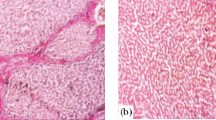Abstract
The recommended dietary intakes for the chelated metal proteinates containing copper in various bound forms, organic and inorganic, at different levels have been proven in an experiment with young fattening pigs. Compound feed enriched with copper sulfate at the rate of 40 g per t was fed to the tested animals in the control group. The animals in the first experimental group received compound feed supplemented with the element indicated above (in the form of copper sulfate) at a dose rate of 20 g/t. The animals in the second and third experimental groups were given the chelated copper complexes at the levels of incorporation of 50 and 100 g/t of compound feeds. The surveys have determined that the optimum rate of inclusion of organic copper into the compound feed for young fattening pigs is 50 g per t. This has the potential to improve the protein digestibility by 1.82%, which is followed by increases in the average daily liveweight gains and the carcass meat yields by 4.5 and 2.2%, respectively. Significant deposits of iron, copper, zink, and manganese in the liver, the longissimus dorsi muscle, and the tibia of the experimental animals fed compound feeds supplemented with the indicated microelements are detected. Histological sections of the small intestine mucosa have indicated that the use of organic copper can contribute to the development of the villus height and the crypt depth and, thereby, improve the digestive and absorptive functions of the intestine. Intensification of the biochemical processes in blood and tissues of the liver and the stomach occurs, which can potentially contribute to increasing the young pig production by 4.5%.



Similar content being viewed by others
REFERENCES
Voinar, A.O., Biologicheskaya rol' mikroelementov v zhizni zhivotnykh i cheloveka (The Biological Role of Trace Elements in the Life of Animals and Humans), Chelyabinsk: Yuzhno-Ural. Izd., 1967.
Bala, Yu.M. and Lifshits, V.M., Mikroelementy v klinike vnutrennikh boleznei. Monografiya (Trace Elements in the Clinical Picture of Internal Diseases. Monograph), Voronezh: Izd. Voronezh. Univ., 1973.
Kalashnikov, A.P., Normy i ratsiony kormleniya sel’skokhozyaistvennykh zhivotnykh (Norms and Rations for Feeding Farm Animals), Moscow: Kolos, 2003.
Prostokishin, A.S., Krasnoshchekova, T.A., Tuaeva, E.V., Babukhadiya, K.R., and Plotnikov, N.B., Optimization of feeding young cattle and chickens through the use of alternative feeds and chelated compounds of normalized trace elements, Zootekhniya, 2015, no. 3, pp. 14–15.
Samokhin, V.T., Profilaktika narushenii obmena mikroelementov u zhivotnykh (Prevention of Trace Element Metabolism Disorders in Animals), Voronezh: Voronezh. Med. Univ., 2003.
Shustov, V.Ya., Mikroelementy v gematologii (Trace Elements in Hematology), Moscow: Meditsina, 1967.
Liu, B., Xiong, P., and Chen, N., Effects of replacing of inorganic trace minerals by organically bound trace minerals on growth performance, tissue mineral status, and fecal mineral excretion in commercial grower-finisher pigs, Biol. Trace Elem. Res., 2016, vol. 173, no. 2, pp. 316–324.
Pastorelli, G., Rossi, R., Zanardi, E., Ghidini, S., and Corino, C., Two different forms and levels of CuSO4 in piglet feeding: Liver, plasma and faeces copper status, J. Anim. Feed Sci., 2014, vol. 23, no. 1, pp. 52–57.
Sharvadze, R.L., Krasnoshchekova, T.A., Perepelkina, L.I., Samuylo, V.V., and Kurkov, Y.B., Use of chelated forms of microelements contained in natural food resources in feeding animals within the territory of the amur river region, EurAsian J. BioSci., 2018, vol. 12, no. 1, pp. 143–148.
Kal’nitskii, B.D. and Stetsenko, I.I., Metabolism and the biological significance of chelating compounds of trace elements in the animal organism, Mat. Vses. Soveshch. VNIIFBiP S.-Kh. Zhivotnykh, 1987, pp. 90–94.
Nadeev, V.P., Chabaev, M.G., and Nekrasov, R.V., Organic trace elements for industrial pig breeding, Kombikorma, 2013, no. 6, pp. 77–79.
Lee, S.H., Choi, S.C., Chae, B.J., Lee, J.K., and Acda, S.P., Evaluation of metal-amino acid chelates and complexes at various levels of copper and zinc in weanling pigs and broiler chicks, Asian-Australasian J. Anim. Sci., 2001, vol. 14, no. 12, pp. 1734–1740.
Shulaev, G.M. and Dobrynin, V.M., Microelement bioplexes as part of premixes for young pigs, Svinovodstvo, 2009, no. 8, pp. 30–31.
Tomme, M.F., Metodiki opredeleniya perevarimosti kormov i ratsionov (Methods for Determining Digestibility of Feed and Rations), Moscow, 1969.
Ermachenko, L.A., Atomno-absorbtsionnyi analiz v sanitarno-gigienicheskikh isssledovaniyakh (Atomic Absorption Analysis in Sanitary Research), Podunova, L.G., Ed., Moscow: Chuvashiya, 1997.
Drozdova, L.I. and Puzyrnikov, A.V., Comparative morphology of digestive organs in pigs of industrial and farming enterprises, Agrarn. Vestn. Urala, 2017, no. 2, pp. 27–32.
Kokorev, V.A., Biologicheskoe obosnovanie potrebnosti suporosnykh svinomatok v makroelementakh (Biological Substantiation of the Need of Pregnant Sows in Macroelements), Lapshin, S.A., Ed., Saransk: Sarat. Univ., Saransk. Fil., 1990.
Author information
Authors and Affiliations
Corresponding author
Ethics declarations
Conflict of interest. The authors declare that they have no conflict of interest.
Statement of welfare of animals. All applicable international, national, and/or institutional guidelines for the care and use of animals were followed. The article does not concern any researches using animals as objects.
Additional information
Translated by O. Zhiryakova
About this article
Cite this article
Chabaev, M.G., Nekrasov, R.V., Strekozov, N.I. et al. Effects of Different Levels and Forms of Chelated Metal Proteinates on Productive Performance and Metabolic Processes in Fattening Young Pigs. Russ. Agricult. Sci. 46, 161–166 (2020). https://doi.org/10.3103/S1068367420020032
Received:
Revised:
Accepted:
Published:
Issue Date:
DOI: https://doi.org/10.3103/S1068367420020032



